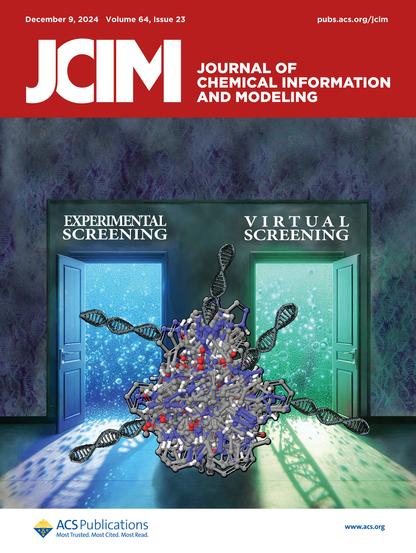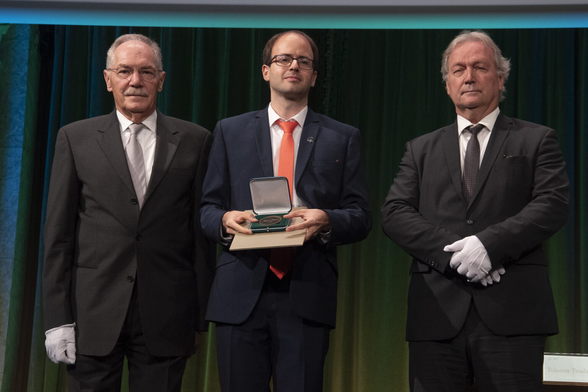In our recent work, we have utilized a scarcely-studied #allosteric site of STAT3 to design new covalent inhibitors. https://pubs.acs.org/doi/10.1021/acsmedchemlett.4c00622
Medicinal Chemistry Research Group at the Research Centre for Natural Sciences, headed by György M. Keserű.
Following our recent review on #fluorescent probes for #GPCRs, our latest paper details an interesting case study of the M2 receptor.
https://pubs.acs.org/doi/full/10.1021/acsmedchemlett.4c00592
Our latest review in Eur J Pharm Sci summarizes recent advances (2018–2024) in #fluorescent probe development for Class A #GPCRs, analyzing over 120 newly developed probes covering 60 GPCRs. doi.org/10.1016/j.ejps.2025.107074
How do affinity and reactivity shape covalent target engagement? In our latest paper in J Med Chem, we show the distinct advantages of lead-like compounds vs. fragments in TCI design. #CovalentDrugs #MedicinalChemistry #DrugDiscovery
https://pubs.acs.org/doi/10.1021/acs.jmedchem.5c00017
Our new photoaffinity labelling technology (https://bit.ly/4kiVZ74) is published in @angew_chem. It is more biocompatible, more efficienct, cheaper and easily accessible, even as a late-stage modification. We are working with @EnamineLtd to make it available for the community.
We are happy to welcome Elisa Patacchini from the Sapienza University of Rome, who will be working with us for the next months on the computational modeling of GPCR ligands.
Our work on the benchmarking of uHTVS workflows against DEL libraries was featured on the cover of JCIM @JCIM_JCTC. https://pubs.acs.org/doi/10.1021/acs.jcim.4c00803
Our joint work with the Martinek group of @Uni_Szeged on local surface mimetics was featured on the cover of @angew_chem! https://onlinelibrary.wiley.com/doi/10.1002/anie.202410435
Check out our latest paper on the role of the water network in protein-ligand binding. Fantastic collaboration with our colleagues from @pte1367 and Univ. Ljubljana. @janezilas https://pubs.acs.org/doi/full/10.1021/acs.jcim.4c01291
In the past three days, we have presented our activities to the curious visitors of the first Science Expo exhibition in the magnificent Museum of Fine Arts, Budapest. Thanks for our fantastic PhD students for their volunteer work! https://niu.hu/en/events/science-expo
Check out our latest paper with
@SonjaPeter4, @Chris_de_Graaf, @ALLODD_ITN, @NxeraPharma, on the systematic annotation and ligandability assessment of allosteric GPCR binding sites. https://pubs.acs.org/doi/10.1021/acs.jcim.4c00819
On September 27, we have participated in the annual Researchers’ Night, a national outreach programme for bringing science closer to students. Hats off to our curious participants who have contributed to the identification of new candidate compounds for cancer therapy!
In our latest paper, we are benchmarking uHTVS tools against published DEL datasets of different magnitudes. More details in https://pubs.acs.org/doi/10.1021/acs.jcim.4c00803
We congratulate our colleague, Dávid Bajusz, for being awarded with the Bolyai plaque of the Hungarian Academy of Sciences, as a recognition of outstanding research during his Bolyai scholarship period. https://www.ttk.hun-ren.hu/aktualis-hirek/hun-ren-ttk-s-sikerek-a-bolyai-napon
Read our @NaturePortfolio Behind the Paper blog post on our recent work on photoaffinity-based fragment libraries here: https://communities.springernature.com/posts/photoreactive-fragment-pharmacophores-explore-potential-binding-sites-and-provide-hits-for-highly-challenging-drug-targets
Check out our latest paper where we introduce the concept of #pharmacophore optimized #photoaffinity (PhP) libraries and apply them to challenging targets. https://t.co/HbHZWUUyqY
We are happy to welcome Ágnes Hornyánszky, Írisz Kovács and Levente Sipos-Szabó as the newest members of our group, starting their PhD research from 2024. We wish all of them great success!
Our latest paper on new boronic acid-type PBP1b inhibitors is now online! Another great collaboration with our colleagues at Univ. Ljubljana! https://www.tandfonline.com/doi/full/10.1080/14756366.2024.2305833
We congratulate our colleague, Dávid Bajusz, for being awarded with the Young Scientist Award of the Hungarian Academy of Sciences! 👏👏 https://t.co/Tj8J0jHtiV



